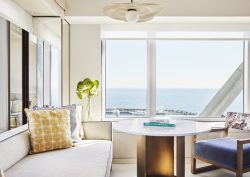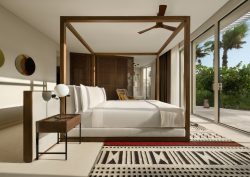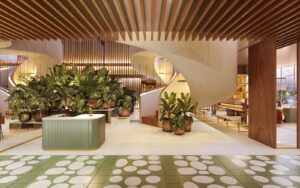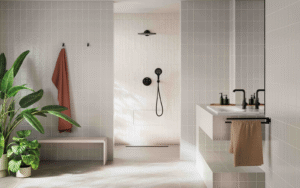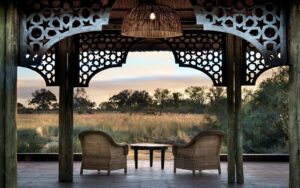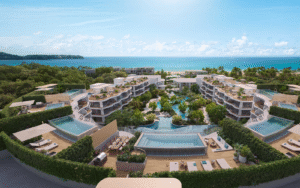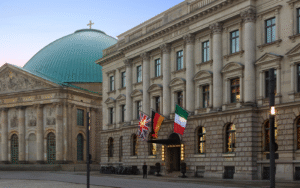With debate around public spaces in hotels ongoing, both on a design as well as a functional level, we take a look at some of the key areas and how they are changing the shape of the hotel experience from the minute we make a grand, or should that be an understated, entrance…
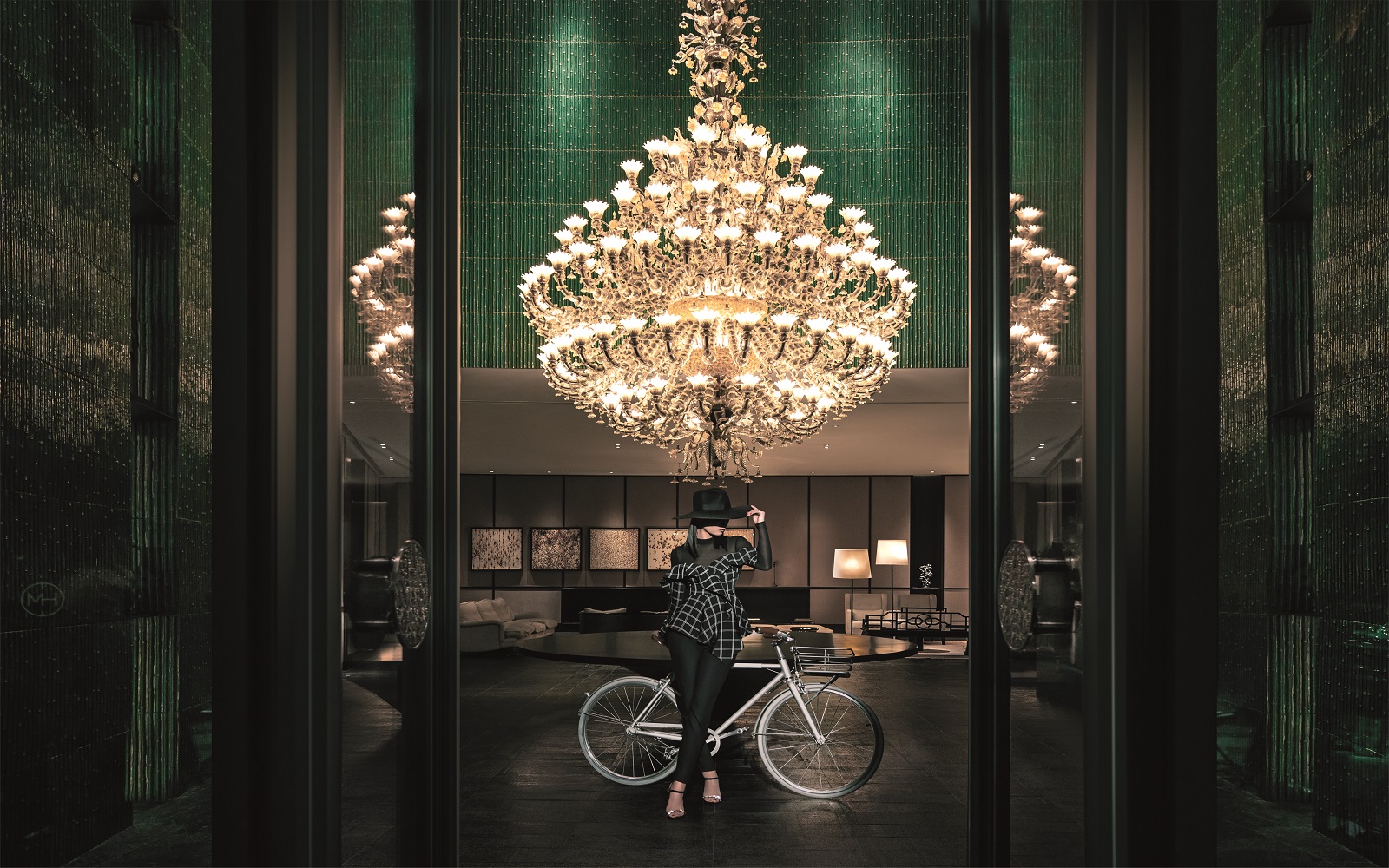
The public space in any hotel is where the designer makes the opening comment. It tells the story of what is to follow behind closed doors, and as such is key to the brand narrative. Theses spaces are influenced by social trends, and in some cases can even lead in breaking established patterns within the hospitality design industry. The key debates broadly within the sector are visibly put into practice in these spaces. We thought we would take a look at some of these conversations and identify how they are being translated into the design and function of the public spaces.

Image credit:
The Arrival experience is all about making a statement, setting the tone. There are increasingly high design expectations, and the public space in a hotel is at the forefront of this. It needs to make an impression the minute a guest steps through the doors, if not before. In some cases the space needs to translate to social media platforms, while in others it might be all about privacy and discretion. As hotels move away from the brand standard approach, fabulous and idiosyncratic design is no longer the realm of the small boutique hotel but is being integrated into designs across the board. The 25hours brand is one example that prides itself on its ‘if you know one you know none’ approach, making each hotel an independent and unique design statement. On the other hand you have luxury hotels EDITION keeping a certain amount of design coherence running through their locations but still providing unique immersive designs.
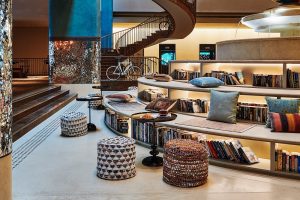
Image credit: 25hours Hotels
Technology in public spaces can cause division and debate; while for some the more connected and seamless the hotel experience the better, while others want a complete break from the day to day demands of technology that can be overwhelming. In the public hotel realm it is surely a question of balance. The balance between connectivity and connection is key as hotels face the apparent contradictions between technology, and that ever important human contact that can define a hotel experience. If properly harnessed these two views are not as contradictory as it would seem – while technology reduces the need for contact and can make things seamless and even faceless, the flipside of a curated use of technology is the potential for increased space for true public areas. Instead of a large amount of space being taken up by what is essentially admin, this space can be used to connect in real time with real people over a coffee or a cocktail, or, with any luck, both.
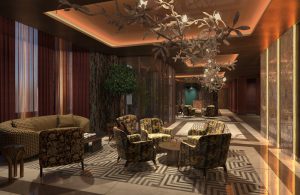
Credits: Bergman Design House / Falconer Chester Hall
Getting ready to launch its first hotel in London, The Other House, making bold claims about disrupting the hospitality sector, seems to encapsulate the new attitude towards technology in hospitality. Despite all the noise around the new era of luxury suggesting a paired back, even removed, stance on technology, it is central to The Other House as they will be offering guests a downloadable app that offers personalisation and control through on-demand access to hotel-style services. The software, which, if seamless, meaningful, discreet and easy to use, will become a revolutionary element of the hospitality experience at The Other House. Its all about that balance between connectivity and connection…
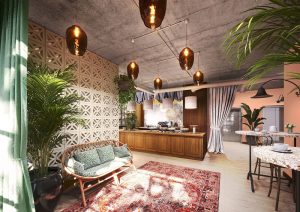
Image credit: room2
Sustainability of course needs to be considered on every level, but how does this translate directly into the public spaces of a hotel? As customers increasingly base decisions on shared values , these values need to be visible in, and part of the fabric of the public spaces. With room2 claiming to be the worlds first fully net zero hotel, it is clearly setting the benchmark , and we are sure it won’t be the last. This is a great example of how sustainability has been integrated into the building, the design, the use of space, the materials used to decorate that space, with the entire focus of the hotel being on providing guests with a local hospitality experience, with flexible public spaces, that connect people and invite them in on the basis of shared values and concerns.

Image credit: Yotel
Flexibility and the notion of the wfhotel is another industry buzzword that is making its mark on the public spaces in hotels. These spaces are increasingly becoming places to spend time in, to work, to relax, to socialise, to shop. Because of this, and contrary to what many people thought would emerge from the covid-19 pandemic, we are seeing an increase in the public spaces along with an increase in demand and flexibility.
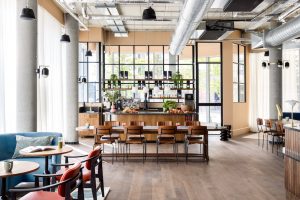
Image credit: Edmund Dabney
Locke Hotels have built the brand around this notion of flexibility – describing the public spaces as ‘equal parts gallery, lounge, coffee shop, retail concept and living room, the space beckons to the street and is as welcoming as it is inscrutable’.
Looking at how Wellness translates into the public spaces, again the demands of the guest as consumer are high. Not only are hotels expected to put wellness on the agenda and make it available for guests, it is increasingly expected to be embedded into the structure and function of the design with concepts like biophilic design becoming as mainstream as cocktails with a side of kombucha.
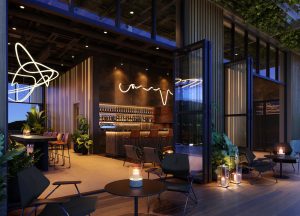
Image caption: Render of the rooftop that will open in SIRO Boka Place, designed by Atellior. | Image credit: SIRO
SIRO Boka Place is one of the newest and clearest examples of just how integral concepts of wellness have become, with the entire hotel experience and concept developed around immersive wellbeing. Starting with the name… S-strength I-inclusive R-reflection O-original. With this in mind, the public areas will be designed to emphasise the social aspects of wellbeing, while on a more literal level the design will feature elements like leather bleacher style seating in these public spaces which reference a sport stadium aesthetic. Wellness is considered on every front in this design, and it is not just about jumping onto a state-of-the-art Pelaton, but also about what materials are used, and how they are used.
Taking things onto a slightly more esoteric level, Six Senses Douro Valley explores colour and sensory design in relation to wellness and takes the conversation into relatively unchartered waters. Harnessing colour, gastronomy and technology opens the wellness playing field in the realm of hotel design right up!
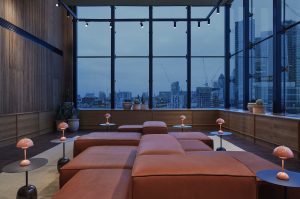
Image credit: Lore Group
Now more than ever, the idea of shared values, of community, is being made tangible in the public spaces of hotel. One Hundred Shoreditch illustrates this, as local identity and an immersive experience are the order of the day and brand identity is now balanced on being able to provide locale. The public spaces provide that interface between hotel and community so the shift is no longer to create a barrier but to provide an interplay. Again referencing One Hundred Shoreditch, designer Jacu Strauss has made a point of opening up the public spaces, of blurring of line between in and out. It is important that the hotel is seen to be part of the community. To achieve this, on a literal level the coffee hatch punches a hole in the wall and breaks down the inside outside divide, while on a slightly more subtle note, the public spaces like the restaurant and bar reflect the surroundings and the divide between guest and community shifts
What is very clear is how interdependent all these concepts are, and it is in fact the interplay between them that defines the public spaces and sets hotels apart. Increasingly the demands being made on public spaces in hotel design have all of these within them but it is a matter of emphasis. It is not a question of if, but of how visible – how much technology, wellness, flexibility we see in the public spaces as these boundaries shift and reflect the accelerated changes that we are seeing impact on every aspect of hotel design.
Main image credit: The House Collective






